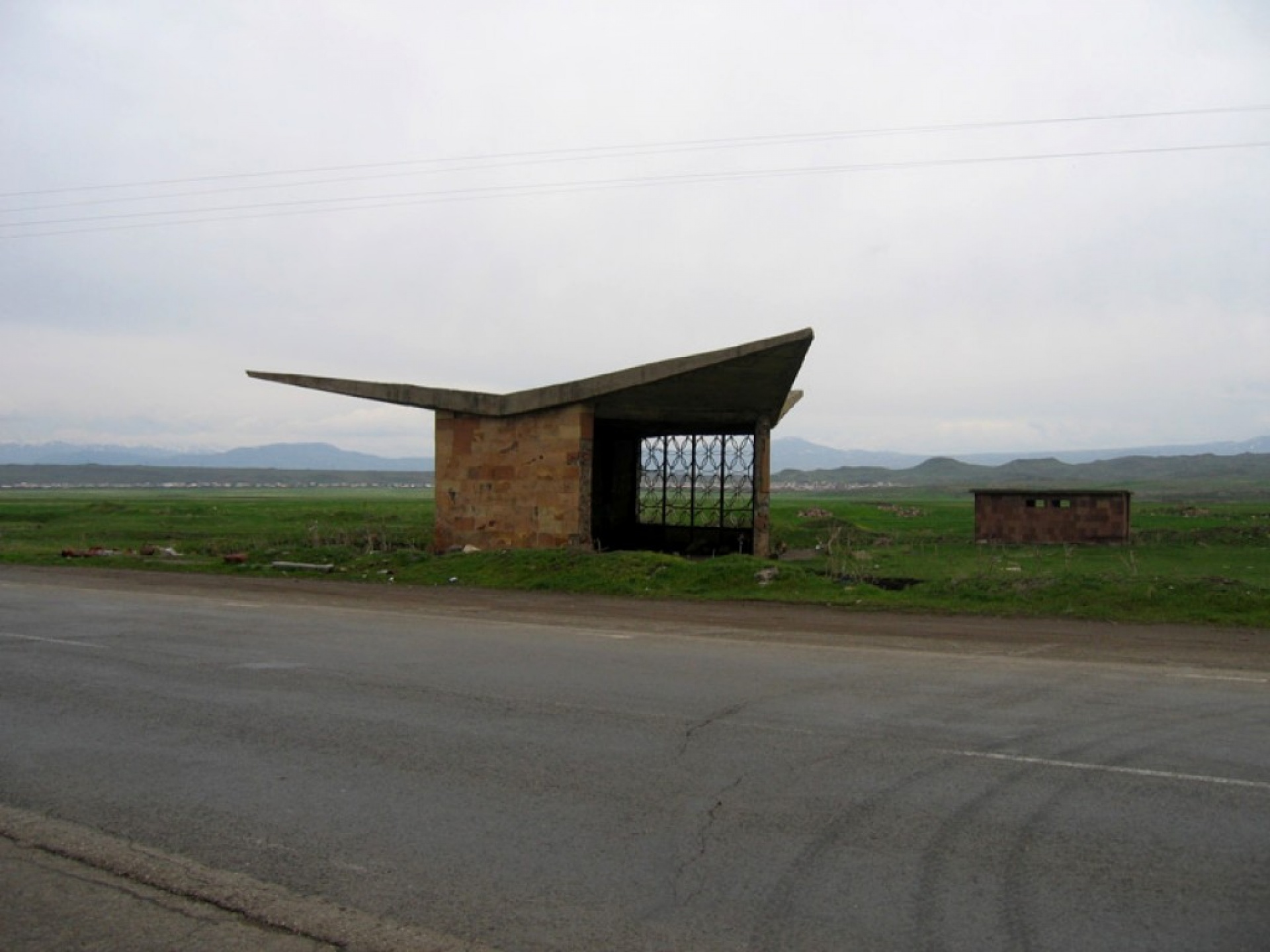Ruins of Our Time, a series of 12 photographs taken in 2005,
depicts a journey outside of Yerevan, showing a desolate landscape dotted with unique, abandoned bus stops.
As if floating in the air, these structures briefly attract the attention of passers-by, but their presence is not erased.
With few exceptions, the unique and ornate buildings are presented as functional elements for public visibility and amenity rather than as grand and ambitious structures.
Bus stations in Armenia are distinguished by their unique design, most of which were created during the experimental period from the 1960s to the 1980s. This was a particularly innovative period in Armenian architecture, with bus stations often built of stone or concrete, sometimes showing elements of the constructivist architectural tradition.
Soviet architectural practice often combined monuments, and "stationary monuments" were designed to glorify the greatness of Soviet public transport.
These structures were close to several relatively large towns and cities and were located along highways served by local bus service. However, as the number of buses and minibuses traveling to and from the village increased after liberation, these bus stations became worn out, leading to loneliness and the passage of time amid changing traffic conditions.
